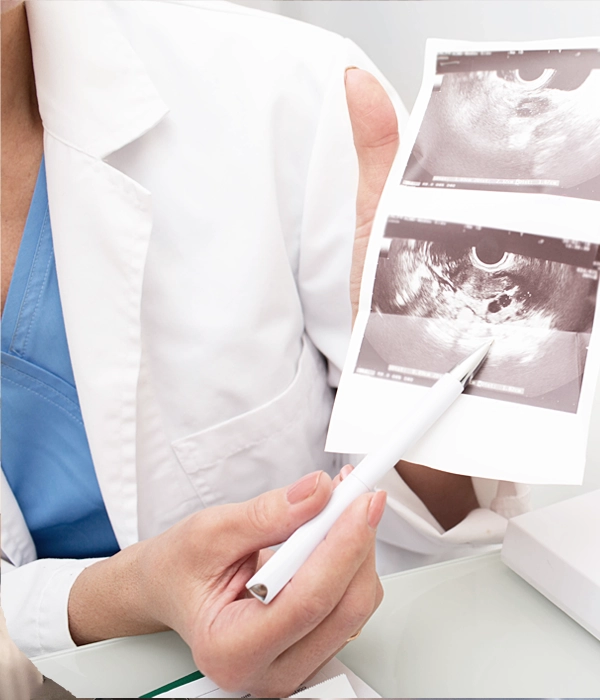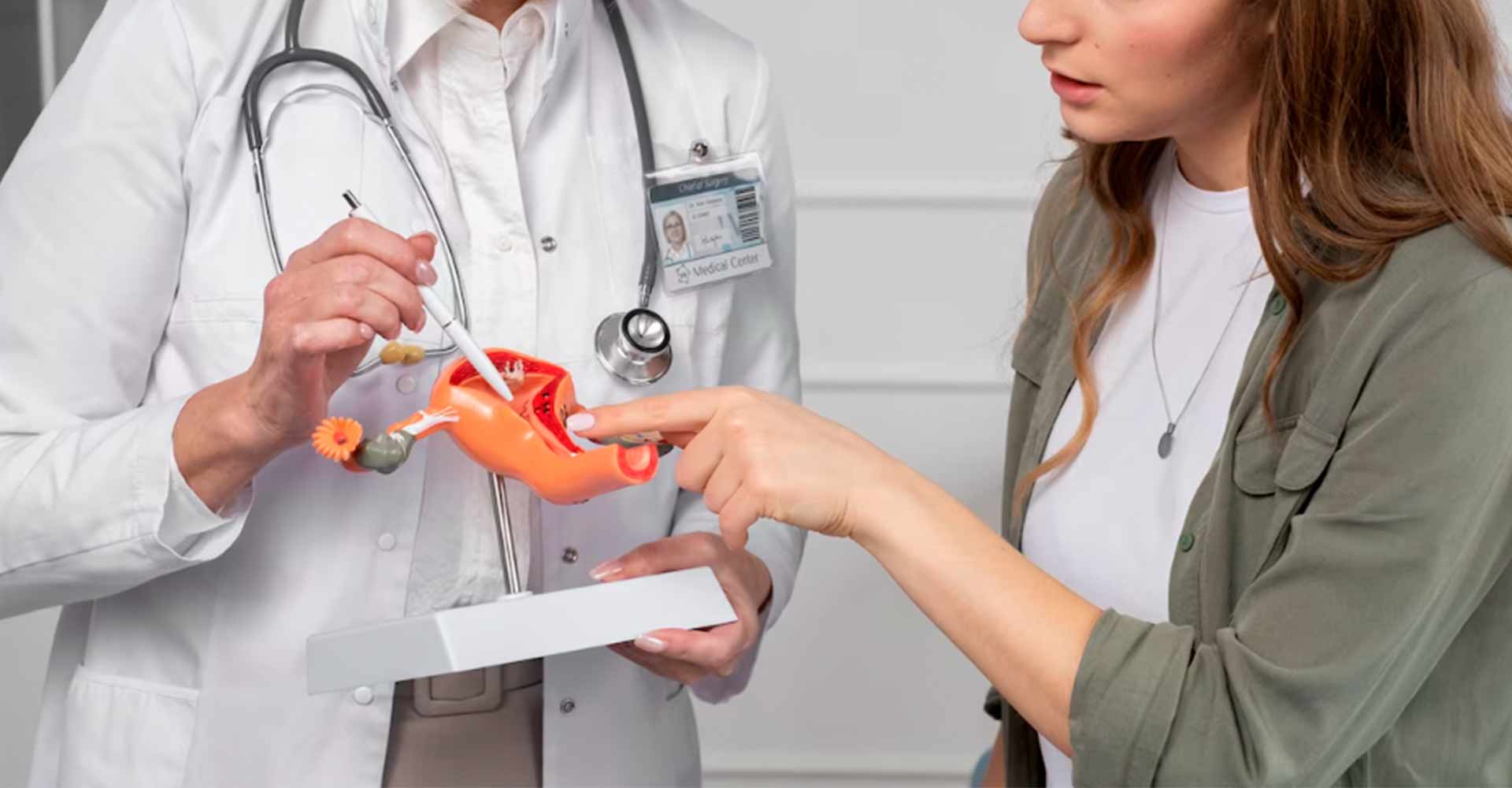Uterine pathology
Malformations in the anatomy of the uterus or the presence of various benign pathologies (polyps, adenomyosis, myomas, etc.) can be the cause of implantation failures and recurrent miscarriages, as well as premature births.
At Tambre we have a Uterine Pathology Unit specialising in the diagnosis and treatment of diseases that prevent implantation and pregnancy progression.
Would you like us to study your case?
Uterine pathologies that cause infertility
Within the reproductive process, the uterus is a fundamental organ because it is involved in three key issues: the transport of sperm to the fallopian tubes to meet the egg, the implantation of the embryo in the endometrium (which is the inner layer of the uterus) and the development and nourishment of the embryo.
This is why, when there is a uterine pathology or a congenital malformation of the uterus, it is the reason for implantation failures, recurrent miscarriages and even premature births. Hence the importance of detecting, diagnosing and treating uterine pathologies to facilitate pregnancy, either naturally or through assisted reproduction.
The main uterine pathologies involving fertility problems are:
These are non-cancerous growths in the wall of the uterus. If their size and location interfere with the implantation of the fertilised egg or block the fallopian tubes, they may need to be removed.
These are benign growths that develop in the lining of the uterus. They are usually harmless, but can also interfere with embryo implantation or make conception difficult.
These are adhesions or scars that form inside the uterus, often as a result of previous uterine surgery, such as curettage or caesarean section.
This is a pathology similar to endometriosis, but the abnormal tissue growth is in the wall of the uterine muscle.
They can interfere with fertility in different ways, such as obstructing the passage of sperm into the fallopian tubes, hindering embryo implantation, or increasing the risk of miscarriage due to an unsuitable uterine environment.
An inflammation of the cervix is usually caused by bacterial, viral, fungal or parasitic infection. This pathology can affect fertility because it alters the consistency and quality of the cervical mucus, making it difficult for sperm to pass into the uterus, and it can also damage the cervical tissue, forming scarring or fibrous tissue that hinders embryo implantation.

Personalised Diagnosis
At Tambre we can provide you with a personalised diagnosis of uterine pathology at your first visit.
Personalised diagnosis of uterine pathology on your first visit
The assessment and diagnosis of uterine pathology requires a multidisciplinary approach and the use of imaging techniques.
Understanding how the menstrual cycle influences uterine morphology and using the right equipment at the right time is crucial to ensure an accurate diagnosis and offer the most appropriate and effective treatment.

Proliferative or postmenstrual phase
During this phase, pathologies such as uterine polyps or uterine fibroids may be more visible to detect.

Preovulatory phase
Just before ovulation, it is easier to observe changes in endometrial morphology.

Secretory or post-ovulatory phase
Adenomyosis or pathologies affecting the morphology of the uterus may be more evident in this phase.
At Tambre we specialise in Advanced Reproductive Medicine.
We have high-resolution 3D ultrasound scanners that allow us to better diagnose uterine pathology.
The 3D ultrasound scan we perform during your first visit to Tambre, together with the other basic diagnostic tests, enables our specialists to make an initial diagnosis during your first consultation.
Depending on these initial conclusions, your medical team may order other complementary tests such as diagnostic hysteroscopy. At Tambre we only perform this test if it is necessary to take biopsies or as a treatment (surgical hysteroscopy) for polypectomy, myomectomy or metroplasty.
This means we avoid performing surgery to diagnose uterine pathology. Thanks to technological advances, especially in ultrasound, and the experience of our gynaecologists, at Tambre we can diagnose uterine pathology more quickly and easily, avoiding unnecessary surgery.
What should you know about Tambre?
More than 45 years of experience fulfilling dreams
How to treat uterine pathologies

At Tambre we use different techniques to ensure that the uterus is in perfect condition before embryo transfer.
Surgical hysteroscopy
This is a minimally invasive surgery that allows us to remove polyps, myomas, adenomyomas, etc. and even correct certain uterine malformations that may be causing implantation failure and repeated miscarriages.
Endometrial PRP
When repeated implantation failures occur or there is a diagnosis of refractory endometrium and, therefore, there is not an adequate response to endometrial preparation, platelet-rich plasma (PRP) helps us to achieve the desired endometrial thickness for embryo transfer.
Specialists in Advanced Reproductive Medicine
We are pioneers in assisted reproduction in Spain and Europe. 45 years of medical excellence.
Plus, we design tailor-made treatments.
- State-of-the-art assisted reproduction laboratory.
- Our own andrology laboratory.
- RI Witness™ for the safety and traceability of gametes.
- GERI®: Embryo Incubator®.
- Fenomatch, we find the right egg donor and/or sperm donor and match them with you.
- Zymot-ICSI (Chip Fertile), selection of the best sperm before ICSI.
- You will have your own gynaecologist and nurse, except for emergencies, and the same medical team will follow your case in depth and attend you from the beginning to the end of the treatment.
- You will have a consultant from our Specialised Tambre Care team who will support you and answer any question you may have throughout the whole process.

Dreams come true
Real stories like yours

A Beautiful Journey of Hope: Victoria’s Experience at Tambre
With the right support and expertise, the journey to parenthood can indeed be wonderful. “We couldn’t have asked for more from Tambre”
Read more

The happy ending to the story of Kirstie and Chris
“I accompanied Kirstie and Chris on that first visit to Madrid but they didn’t really need me as the Tambre team made them feel extremely welcome from day one so I felt very comfortable”
Read more

Our Most Travelled Patient and her Latest Destination, Tambre!
“We had huge expectations and I think they were met. I think it was a really lovely experience from start to finish,” Nicola acknowledges.
Read more
We stay with you
Shall we call you?









